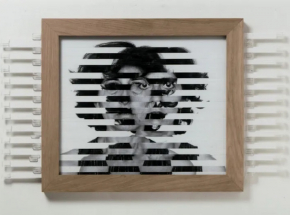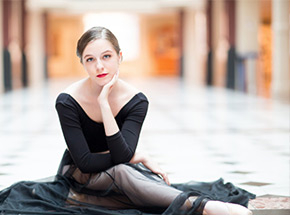- About AUP
- History of AUP
- Mission & Core Values
- Vision and Leadership
- AUP Recognition
- Alumni Success
- Campus Development
- Arts at AUP
- Policies & Guidelines
- Academics
- Undergraduate
- Graduate Programs
- MA in Diplomacy and International Law
- MA in Global Communications
- MSc in Human Rights and Data Science
- MA in International Affairs
- MA in International Affairs, Conflict Resolution, and Civil Society Development
- MSc in International Management
- MSc in Strategic Brand Management
- Find Your Thesis Advisor
- Previous Programs
- Cultural Program
- Faculty
- Summer School
- Research Centers
- The Center for Critical Democracy Studies
- Upcoming Events
- Research Projects
- Fellows’ Publications
- Publishing
- Curriculum
- Community
- Partnerships
- Visiting Scholars
- CCDS Highlights
- Atelier de Théorie Politique – Paris
- Critical Theory 101: Future Directions and New Challenges
- Martti Koskenniemi on “The Law of International Society: A Road not Taken”
- Academic Freedom Symposium
- Tocqueville Colloque 2023
- Violent Turns Conference
- Degenerations of Democracy
- DEMOS21 Inaugural Event
- What Demos for the 21st Century?
- The Paris Centennial Conference
- Justice Stephen Breyer
- Civic Jazz - The Launch of the Center
- Past Events
- FR
- The Center for Writers and Translators
- The George and Irina Schaeffer Center for the Study of Genocide, Human Rights and Conflict Prevention
- The Joy and Edward Frieman Environmental Science Center
- The Center for Media, Communication & Global Change
- The Center for Critical Democracy Studies
- Departments
- Academic Resources
- Academic Affairs
- Academic Calendar
- Academic Resource Center
- Library
- Registrar's Office
- Teaching and Learning Center
- Accessibility & Accommodation Services
- AI@AUP: A Campus-Level Initiative
- Quai D'Orsay Learning Commons
- Paris as Classroom
- ACE
- Admissions
- Student Life
- Campus
- Student Leadership & Involvement
- Paris
- Support Services
- Student Life Help Desk
- Student Accounting Services
- Student Immigration Services
- Student Grievance Procedure
- Diversity and Inclusion
- Health & Well-being
- Digital Student Handbook
- News
- Events
- AUP Giving
- Housing Offer for 2025-2026
- IT Services
- Alumni
- About AUP
- History of AUP
- Mission & Core Values
- Vision and Leadership
- AUP Recognition
- Alumni Success
- Campus Development
- Arts at AUP
- Policies & Guidelines
- Academics
- Undergraduate
- Graduate Programs
- MA in Diplomacy and International Law
- MA in Global Communications
- MSc in Human Rights and Data Science
- MA in International Affairs
- MA in International Affairs, Conflict Resolution, and Civil Society Development
- MSc in International Management
- MSc in Strategic Brand Management
- Find Your Thesis Advisor
- Previous Programs
- Cultural Program
- Faculty
- Summer School
- Research Centers
- The Center for Critical Democracy Studies
- Upcoming Events
- Research Projects
- Fellows’ Publications
- Publishing
- Curriculum
- Community
- Partnerships
- Visiting Scholars
- CCDS Highlights
- Atelier de Théorie Politique – Paris
- Critical Theory 101: Future Directions and New Challenges
- Martti Koskenniemi on “The Law of International Society: A Road not Taken”
- Academic Freedom Symposium
- Tocqueville Colloque 2023
- Violent Turns Conference
- Degenerations of Democracy
- DEMOS21 Inaugural Event
- What Demos for the 21st Century?
- The Paris Centennial Conference
- Justice Stephen Breyer
- Civic Jazz - The Launch of the Center
- Past Events
- FR
- The Center for Writers and Translators
- The George and Irina Schaeffer Center for the Study of Genocide, Human Rights and Conflict Prevention
- The Joy and Edward Frieman Environmental Science Center
- The Center for Media, Communication & Global Change
- The Center for Critical Democracy Studies
- Departments
- Academic Resources
- Academic Affairs
- Academic Calendar
- Academic Resource Center
- Library
- Registrar's Office
- Teaching and Learning Center
- Accessibility & Accommodation Services
- AI@AUP: A Campus-Level Initiative
- Quai D'Orsay Learning Commons
- Paris as Classroom
- ACE
- Admissions
- Student Life
- Campus
- Student Leadership & Involvement
- Paris
- Support Services
- Student Life Help Desk
- Student Accounting Services
- Student Immigration Services
- Student Grievance Procedure
- Diversity and Inclusion
- Health & Well-being
- Digital Student Handbook
- News
- Events
- AUP Giving
- Housing Offer for 2025-2026
- IT Services
- Alumni
Related Links
Student
Lilly
Major in Philosophy, Politics and Economics
I was born and raised near Cologne, Germany before attending a boarding school in England, where I obtained the International Baccalaureate. After a gap year, when I took a three-month make-up course in Munich and spent four months in Singapore at a sales and lighting design internship, I started looking into my university options. I wanted to continue my education in English, but I also didn’t want to stay in London or apply to English-speaking programs in Germany, which were mostly for business and economics. My two older brothers had graduated from AUP and loved it, which intrigued me, as did the idea of a liberal arts education so after some consideration, I made the leap as well.
I’d initially planned on double-majoring in Economics and History but soon abandoned that course of action when I fell in love with my Philosophy Firstbridge and Professor Michelle Kuo’s “Politics of Immigration” course. Once I’d switched to Philosophy, Politics, and Economics, I also exchanged History for Art History, so that I could better integrate my love of museums and my experiences with creative make-up and body painting into my studies. As I adjusted my program of study, I appreciated how I was being encouraged to try out classes in multiple subject areas, since it pushed me to really think about what I wanted and why.
I love the small classes here because it makes each classroom’s atmosphere feel far more compelling and also makes it easier for our professors to provide detailed feedback and share their own academic pursuits.
My favorite academic moments are when unexpected connections occur between different classes, like when we focused on the development of the state in “Foundations of Modern Politics” at the same time that I was exploring how Versailles fit into Louis XIV’s approach to shaping the French state in “Versailles: Absolutism to Enlightenment”. I’m also lucky enough to have a lot of my classes taught in museums, including the Louvre, where I don’t get lost nearly as much as I used to. I also like attending AUP’s evening events, where I get to learn from and about other departments and majors.
I love the small classes here because it makes each classroom’s atmosphere feel far more compelling and also makes it easier for our professors to provide detailed feedback and share their own academic pursuits. For example, Professor Gabriel Wick, who taught the course on Versailles, just published a book on the gardens of the Duc de Noailles at Saint-Germain-en-Laye. His research brought him into contact with the owner of the de Noailles residence, so we got a guided tour from the owner through the de Noailles apartments—it was incredible!
AUP has made me realize just how fascinated I am by art and its expression in various social, cultural, and political contexts: I know that no matter what I do next, art has to play a role in it. It also helps that I’ve gotten to study Art History in a city like Paris, where so much of the artwork that I’d only seen in textbooks is almost literally right on my doorstep. For a crash course in 20th century art, head over to the Centre Pompidou, for Impressionism, it’s all about the Musée d’Orsay, and if you’re looking for Monet, check out the Marmottan. And let’s be honest, how great is it that my Versailles class requires that I go to Versailles or to one of the other castles around Paris almost every week?
Related
-

Paris Through Photography
Featured Course
Read MoreParis Through Photography
Featured Course
Use the camera lens to decipher the city’s history.
-

Lucia's Thesis
Student Work
Read MoreLucia's Thesis
Student Work
For Lucia Sendagorta the choice of Capstone project was an opportunity to explore art from outside a French or American perspective.
-

Sophie
Student
Read MoreSophie
Student
I wanted to major in Psychology until I fell deeply in love with Art History after a Firstbridge class and decided to dig deeper.
